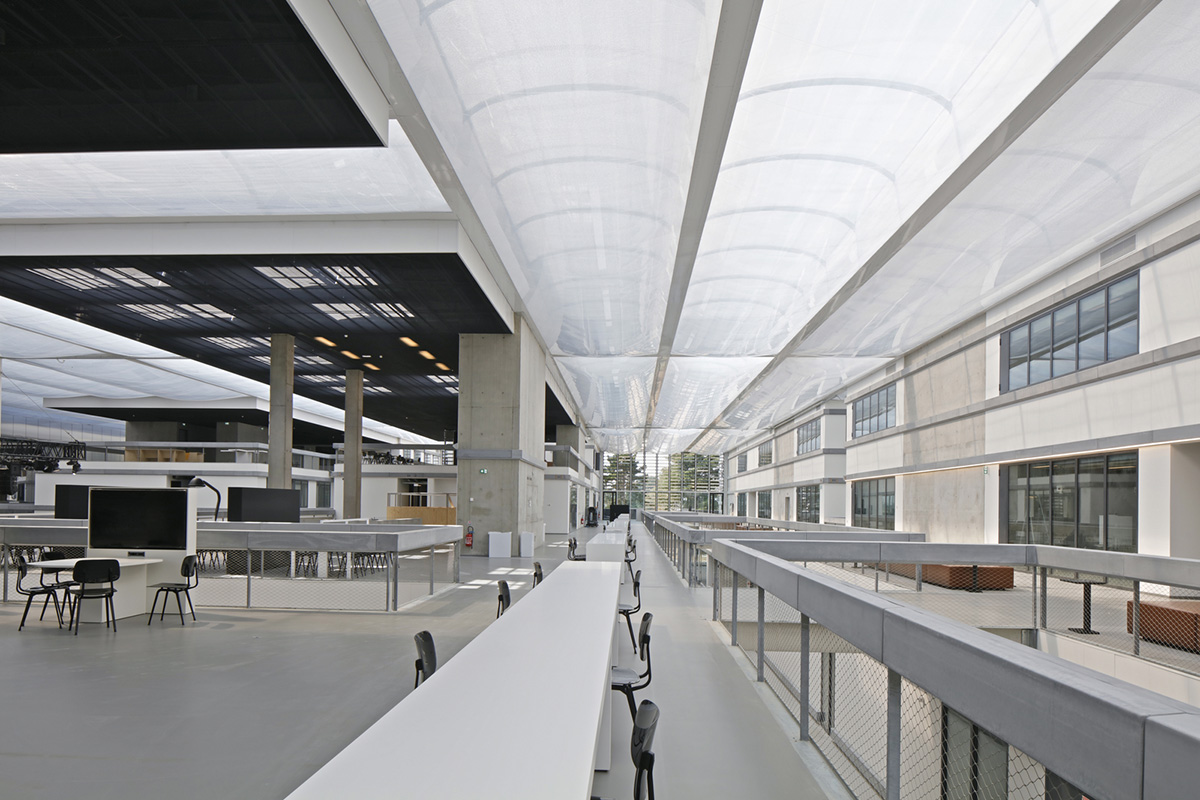Submitted by WA Contents
OMA completes its first scientific building for Ecole Centrale Paris inspired by city’s urban grid
France Architecture News - Sep 04, 2017 - 13:07 16830 views

OMA has completed its first scientific laboratory and engineering school for Ecole Centrale Paris in Paris Saclay, which was inspired by Paris' urban grid of independent blocks to house new laboratories and classrooms. Led by OMA Partner Ellen van Loon, the project aimed re-contextualization and to formulate new types of learning styles that promote community, plurality and diversity of the population within a dense field of knowledge, while ensuring the pure operation of the engineering school as an educational incubator.
OMA's design integrates urbanism with the school, supplanting the previous homogeneous experience of the campus. CentraleSupélec, formed in 2015 by a merger between Ecole Centrale Paris and Supélec, is one of the most prestigious French grandes écoles specialized in engineering.

Image © Vitor Oliveira
Situated at the heart of the future district Joliot-Curie, for which OMA has developed the masterplan, the new building is part of a 22ha campus that will place the university alongside research institutes and major tech companies.

Image © Philippe Ruault
Laboratories are typically planned as linear buildings, a large box divided by endless corridors. Such a typology creates a "blackout" of the urban conditions; the building becomes a gigantic wall due to its extremely isolated and internalized programs.

Image © Philippe Ruault
The studio imagined laboratories as a collection of discreet parcels in an open plan grid; in this way, a city can accommodate endless configurations of programs and activities. Proposing a stable framework for constantly changing requirements, the program may be reconfigured or intensified as necessary.

Image © Philippe Ruault
Called Lab City, the architecture of the Lab City generates an open urban school, with creative disorder framed under a structural skeleton. By creating a main street, cutting diagonally across the Lab City, the design allows a seamless experience between the building and its surroundings, providing a convenient public route between the future heart of the neighbourhood and the future subway station.
Around this urban spine, the program is spread in different buildings of various typologies and sizes, organized on an urban grid served by secondary streets. A unique lightweight roof covering the entire complex completes the scheme by creating a strong link between the different buildings and allowing "external" protected spaces to be used freely all year long.

Image © Philippe Ruault
"The most exciting aspect of this project was to invent a new spatial concept for a globally leading engineering school, at a time when multiple scientific disciplines must vigorously mix and collaborate to remain competitive," said Ellen van Loon, Partner at OMA.

Image © Philippe Ruault
A large translucent roof covers the public areas of the school (streets, terraces, and center square), creating a beautiful, fully daylit interior city space. The building is intersected by a diagonal street, which extends the public route connecting the university with the surrounding campus.

Image © Frans Parthesius
Project facts
Architecture: OMA
Partner in charge: Ellen van Loon, Rem Koolhaas
Project leaders: Clément Blanchet, Edouard Pervès, Saskia Simon
Landscape: D'Ici Là
Engineers: Bollinge r+ Grohmann, ALTO Ingénierie, Royal Haskoning DHV Consultants: Brian Cody, APEX, DAL, DUCKS, Cuisine et Concept, Polygraphik
Top image © Philippe Ruault
> via OMA
